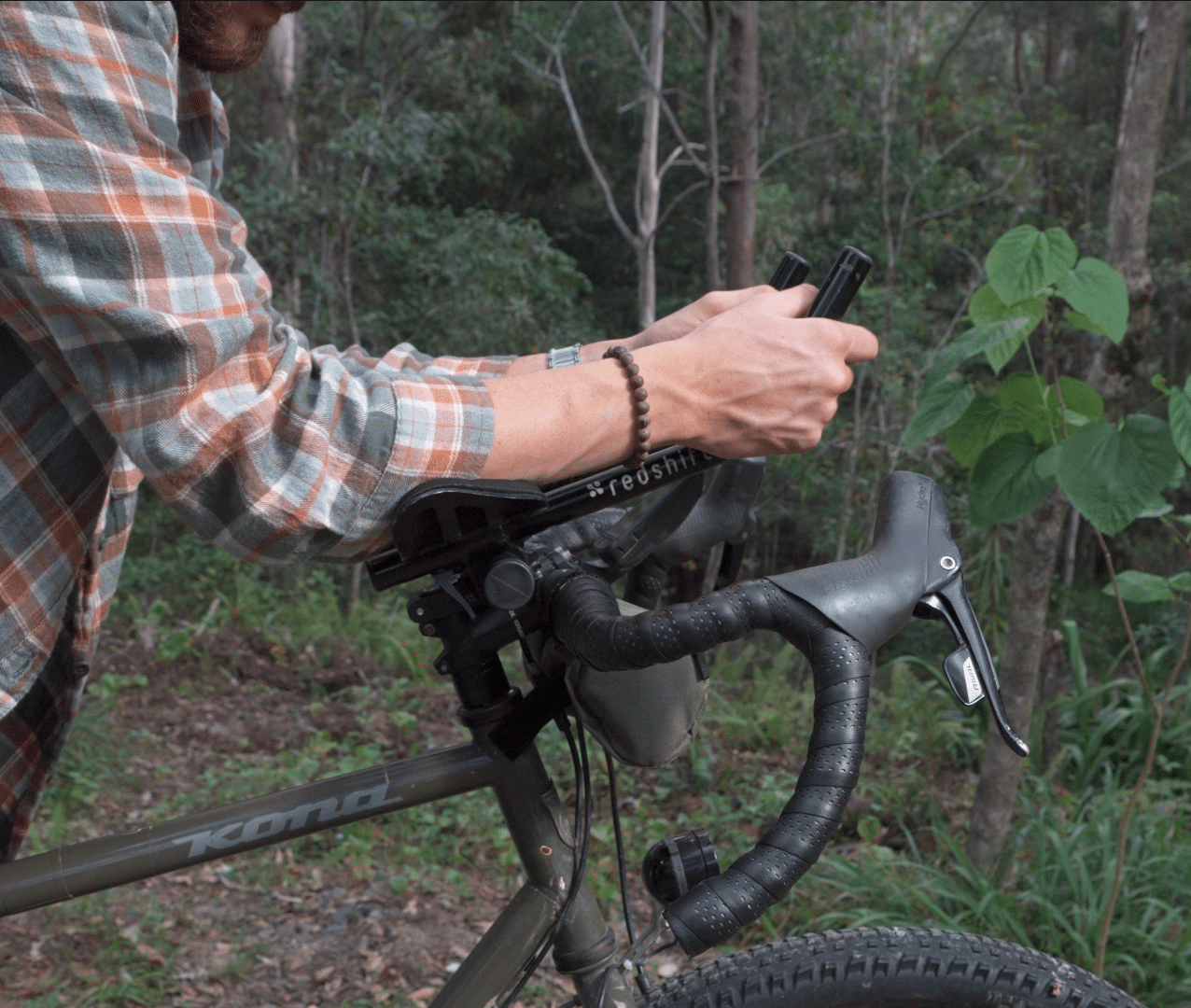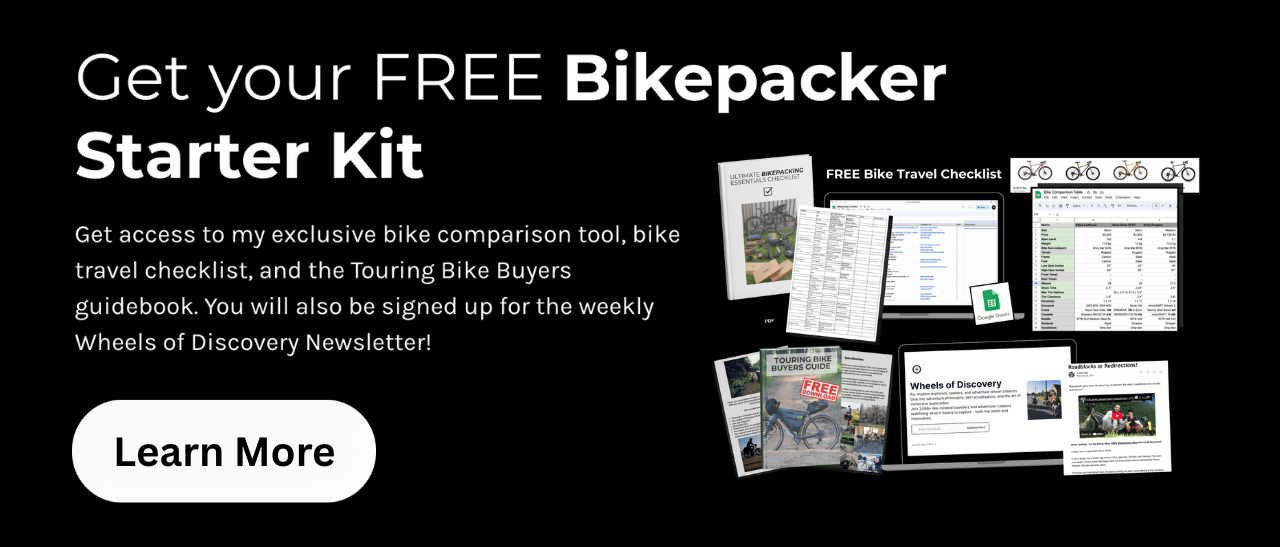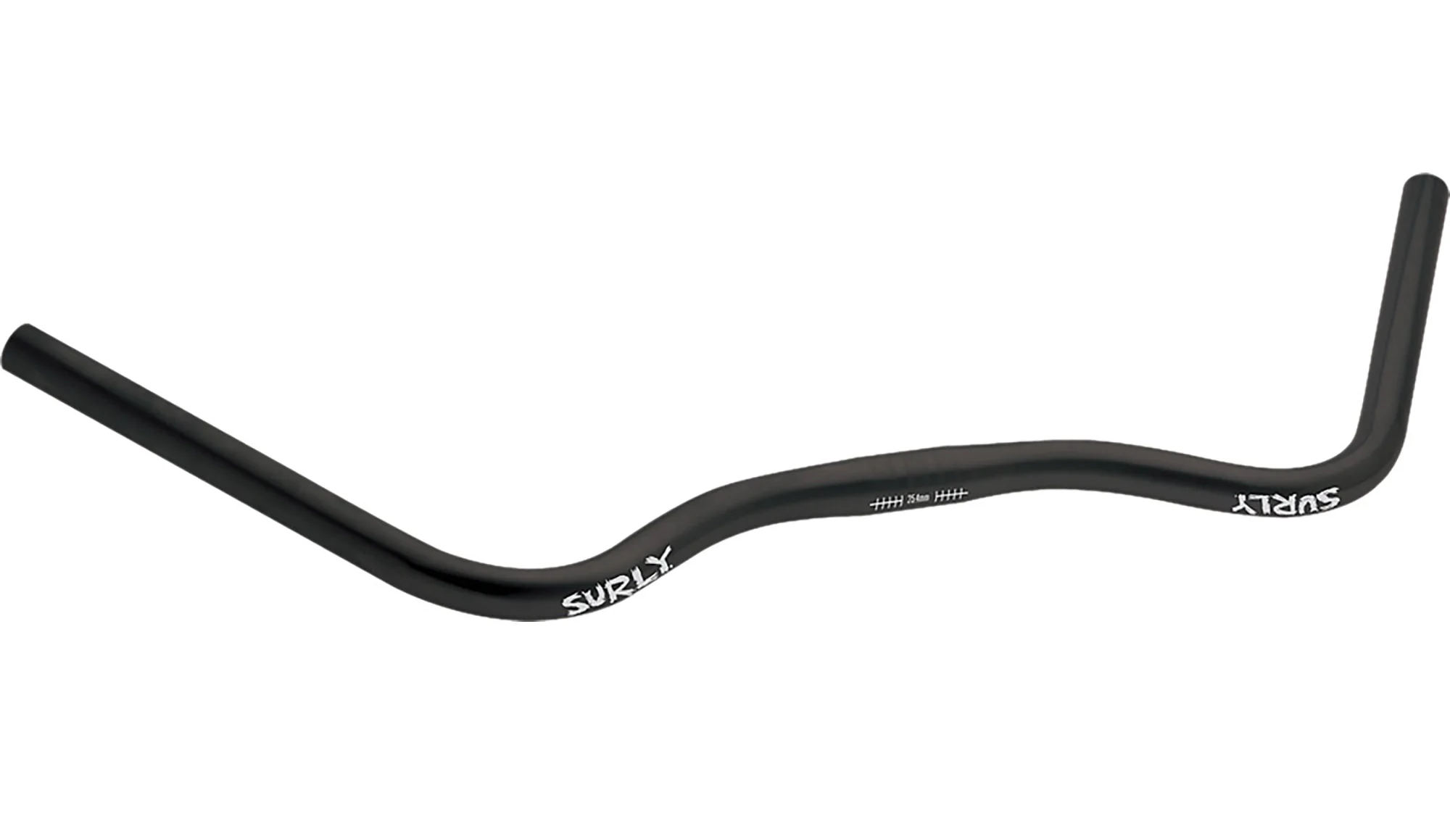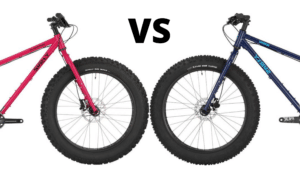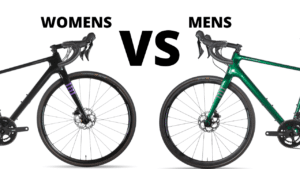Last updated: May 14, 2025
Are you on the hunt for some swept-back handlebars? Handlebars that let you sit more upright and ride in greater comfort? This article covers some of the best options available to improve your posture and overall riding experience—especially helpful on extended, multi-day bikepacking adventures where back comfort really matters. These bars are ideal for touring, bikepacking, and long-distance adventure riding.
While commonly seen on beach cruisers, swept-back handlebars are becoming increasingly popular for those seeking a more ergonomic mountain bike setup or an alternative to drop bars on road bikes. They’re also a great upgrade for touring bikes. That said, swept-back bars aren’t your only option – there’s a wide range of comfortable handlebars worth exploring.
Flared drop bars, for example, offer a more stable stance and greater control on gravel, while butterfly handlebars remain a favorite of mine for their unmatched comfort and hand position variety. If you’re interested, I’ve reviewed these in detail after logging over 7,500 KM in the saddle – check that out for deeper insight.
Before you rush to buy any of the swept-back handlebars featured in this article, it’s important to consider your current bike setup. Changing to these bars often requires some modifications.
While you can absolutely customize your bike, it’s worth remembering that many components work together. Switching to swept-back handlebars will likely mean you’ll also need longer cables and housing, new brake levers or shifters, and fresh grips. Because the hand position is brought significantly closer to your body, your stem – the part that connects the handlebar to the frame – may also need to be adjusted or swapped for one with a different length or rise.
Comfort is key when it comes to bikepacking, and these handlebars help support that by encouraging a more upright, natural posture.
But there’s something else I want to share with you…
Drop bars paired with aero bars can be another consideration for your bikepacking handlebar setup. However, modern gravel bikes often come with a lower stack-to-reach ratio, causing you to stretch out more than is ideal – especially with traditional aero bar positioning. This can result in discomfort and fatigue, particularly on long days in the saddle.
That’s where The Fred Bar comes in.
Once I integrated The Fred Bar into my aero bar setup, the difference was night and day. I could hold the aero position for much longer, without straining my back.
The Fred Bar is an expertly crafted, American-made accessory designed to simplify aero bar installation while improving comfort. Made from aircraft-grade 6061 aluminum and finished with a sleek, durable cerakote coating, it’s built to last.
It’s the perfect addition to your bikepacking rig – and endurance bikepackers around the world are already putting it to use.
One issue I consistently faced with aero bars was how much they made me stretch, which often led to discomfort and meant I didn’t actually spend much time using them – until now.
This product is a true solution to aero bar discomfort.
Since testing the Fred Bar, I find myself using my aero bars all the time. The setup raises and pulls back the bars, reducing reach and allowing you to settle into a more relaxed, crouched position without the strain.
What Are Swept-Back Handlebars?
Swept-back handlebars (often called “alt bars” in the cycling community) are handlebars that angle backward toward the rider, creating a more natural wrist position than traditional straight bars. This design places your hands at a more ergonomic angle, reducing strain on your wrists, shoulders, and back, making them the most comfortable option for MTB touring and bikepacking adventures.
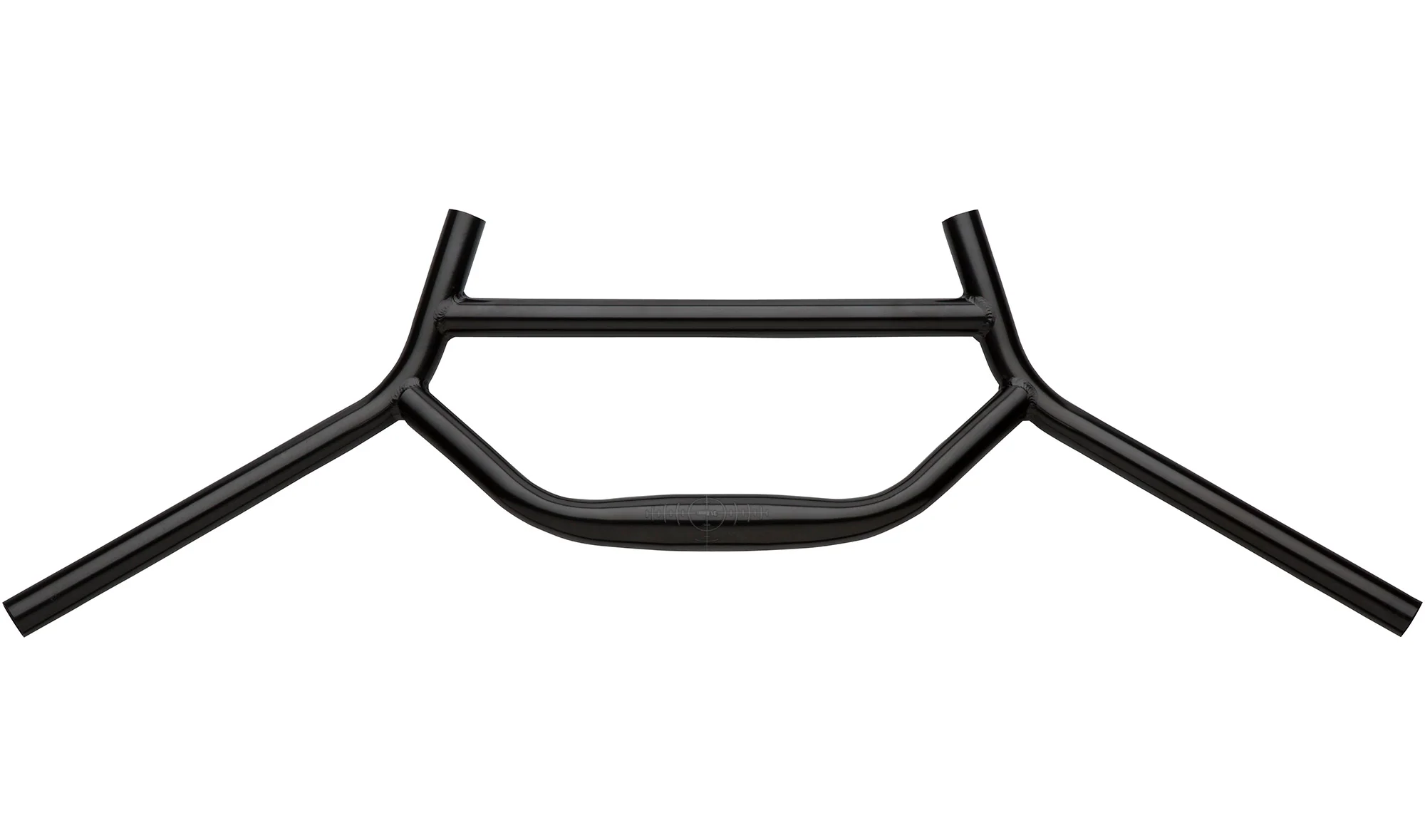
Unlike standard flat MTB handlebars with minimal sweep (usually 5-9 degrees), swept-back handlebars offer anywhere from 15 to 45+ degrees of backsweep. This seemingly simple design change dramatically alters your riding position and comfort, especially during long touring rides.
Why Consider Swept-Back Handlebars for Touring and Comfort?

Improved Wrist Alignment for Long-Distance Comfort
Standard flat bars force your wrists into an unnatural position, especially during long rides. The most comfortable MTB handlebars feature significant sweep that allows your wrists to maintain a more neutral position, reducing strain and numbness – a game-changer for multi-day bikepacking trips when you’re logging serious miles day after day.
Better Posture and Reduced Back Pain for All-Day Riding
The backward sweep naturally brings your torso more upright, taking pressure off your lower back. This upright position makes swept-back handlebars the perfect choice for touring cyclists with existing back issues or those planning extended adventures where recovery time between rides is limited.
Multiple Hand Positions for Extended Touring
Many swept-back designs (especially loop-style bars like the Jones H-Bar) offer additional hand positions, allowing you to shift your grip throughout long touring rides to prevent numbness and fatigue – crucial when you’re spending 6+ hours in the saddle day after day. This versatility makes them arguably the most comfortable MTB handlebars for any type of extended journey.
Enhanced Control on Varied Touring Terrain
For bikepacking that takes you beyond smooth pavement, swept-back touring handlebars often provide improved control on technical terrain. The more natural hand position translates to more precise handling when the road turns to gravel or singletrack, making them ideal for adventure touring across mixed surfaces.
Who Benefits Most from Swept-Back Handlebars?
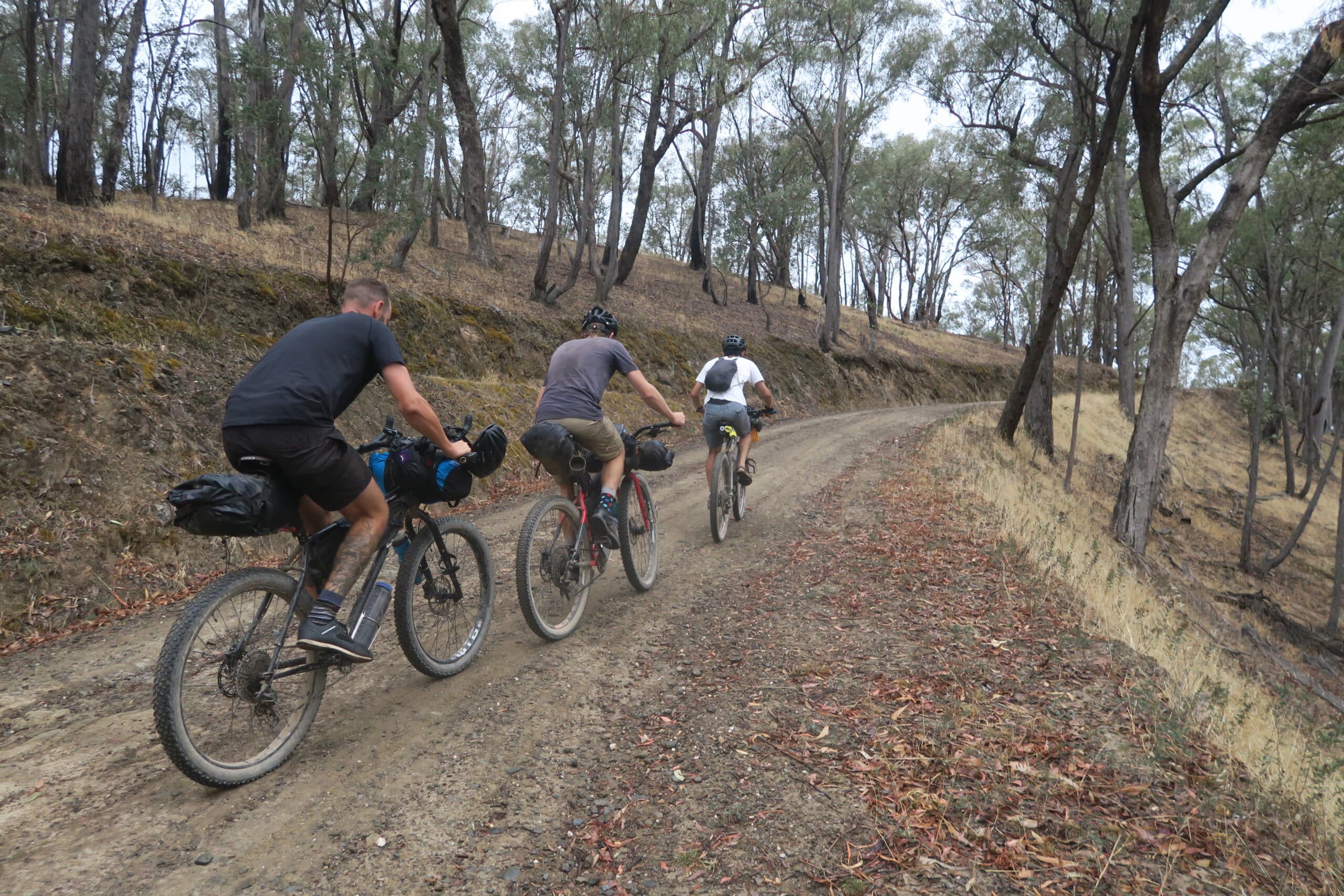
- Bikepackers and Tourers: The comfort-focused design makes these the most comfortable handlebars for long-distance adventures and multi-day trips where recovery is limited
- Riders with Wrist, Shoulder, or Back Issues: The ergonomic positioning can significantly reduce pain during and after rides, often making cycling possible again for those with chronic discomfort
- Trail Riders Seeking All-Day Comfort: Better positioning for those epic, all-day adventures on challenging terrain without the hand numbness that often comes with standard bars
- Urban Commuters: Upright position improves visibility in traffic and reduces strain on daily rides, making the daily commute more sustainable long-term
- Older Riders: Helps maintain cycling enjoyment despite age-related flexibility issues by reducing stress on joints and improving overall comfort
Understanding Handlebar Measurements
Before diving into specific recommendations, it’s crucial to understand the key measurements that define handlebar geometry:
Backsweep

What it is: The angle at which the bars sweep back toward the rider, measured in degrees. Why it matters: Higher backsweep angles (25-45°) create a more natural wrist position and upright posture, while more moderate sweeps (15-25°) balance comfort with a more forward-leaning position.
Upsweep

What it is: The upward angle of the handlebars, measured in degrees. Why it matters: Affects wrist position and control. Most swept-back bars have 4-6° of upsweep for optimal control.
Rise

What it is: The vertical height difference between the center of the bar and the ends. Why it matters: More rise positions you more upright, less rise keeps you in a more forward-leaning position.
Width

What it is: The total width of the handlebar from end to end. Why it matters: Wider bars (750-800mm) provide more leverage and control for technical riding, while narrower bars (600-700mm) may be better for tight trails or urban environments.
Clamp Diameter

What it is: The diameter of the center section that clamps to your stem. Why it matters: Must match your stem (common sizes are 25.4mm, 31.8mm, and 35mm). Some bars use shims to adapt to different stem sizes.
Still deciding between bikes like Sami?

Choosing the right bike can be overwhelming – but it doesn’t have to be.
Join the Bike Buyers Masterclass
A 2-hour step-by-step guide that helps you confidently choose your perfect adventure bike, just like Sami did.
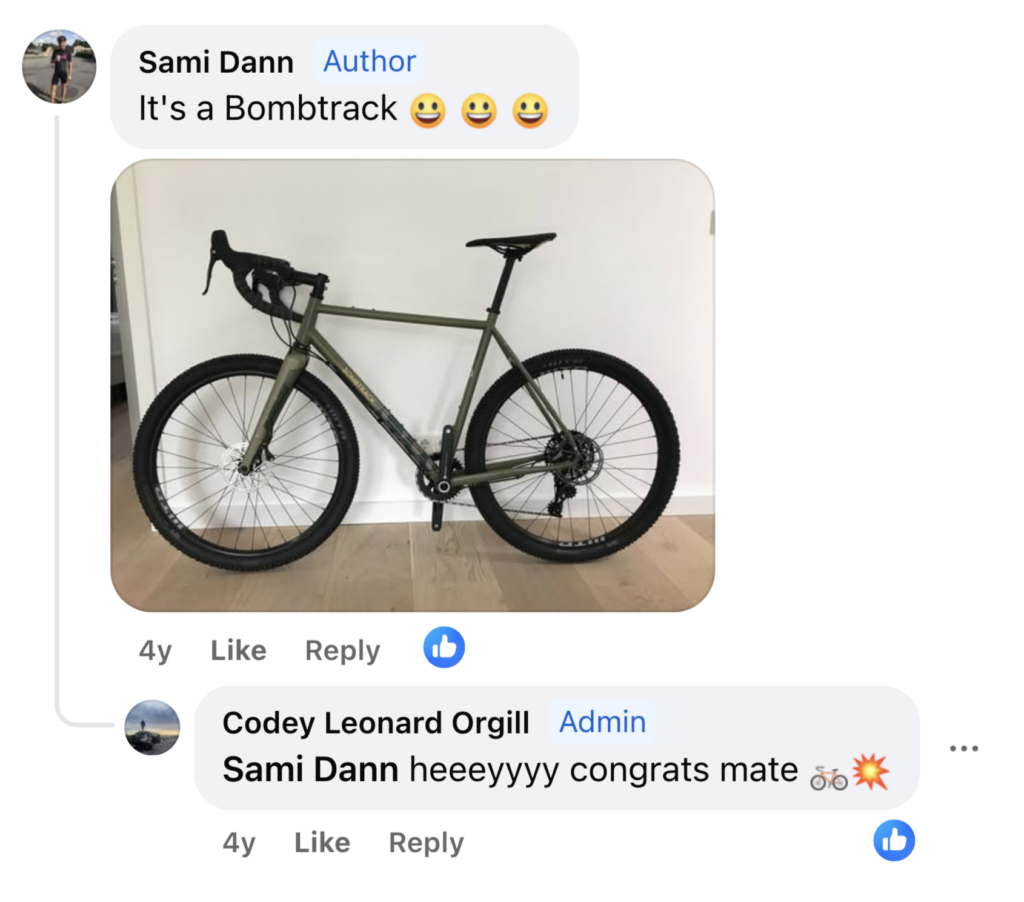
Simplify specs. Avoid costly mistakes. Get support from 3,000+ others.
Plus: Win up to $500 in gear, score exclusive discounts, and join our private community.
How to Choose the Right Swept-Back Handlebars
Selecting the perfect swept-back handlebars involves balancing several factors:
1. Consider Your Primary Riding Style
Bikepacking/Touring: Prioritize multiple hand positions and comfort. Look for bars with 25-45° sweep and potentially loop-style designs for mounting accessories.
Trail Riding: Balance comfort with control. Moderate sweep (15-25°) often provides the best compromise.
Urban Commuting: Focus on upright positioning for visibility. Bars with 30-45° sweep work well.
2. Assess Your Physical Needs
Wrist Pain: More sweep (30-45°) generally provides better wrist alignment.
Back Pain: Higher rise and more sweep bring your torso more upright, reducing back strain.
Shoulder Issues: Wider bars with moderate sweep can reduce shoulder tension.
3. Think About Your Bike’s Geometry
Swept-back bars effectively shorten your bike’s reach (the horizontal distance from saddle to handlebars). Consider how this will affect your overall position:
- If your bike already feels short, you might need a longer stem to compensate
- If your bike feels too long, swept-back bars can help create a more comfortable fit
4. Consider Compatibility Requirements
Some swept-back bars require specific components or adaptations:
- Different brake levers or shifters
- New cable housing lengths
- Alternative mounting solutions for lights or computers
7 Top Swept Back Handlebars for Comfort and Touring
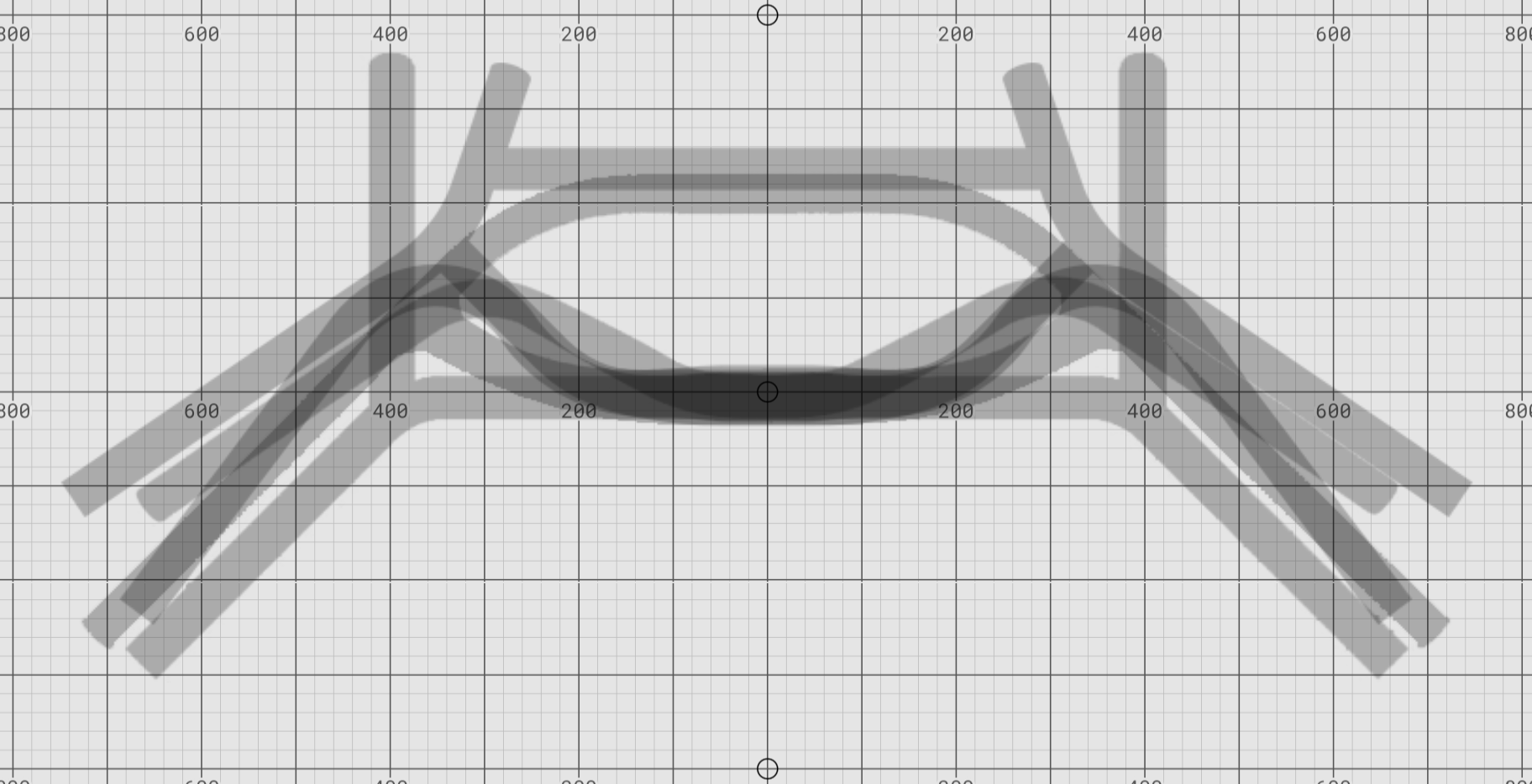
When selecting the ultimate swept-back handlebars, I’ve carefully balanced comfort, versatility, quality, and value. These top recommendations cover various riding styles, from dedicated bikepacking adventures to everyday trail riding, with options for every budget.
1. Jones H-Bar Loop — Best Overall Most Comfortable MTB Handlebar ($$)
Backsweep: 45°
Width: 660mm or 710mm
Rise: Minimal
Best for: Ultimate comfort, bikepacking, multiple hand positions
The Jones H-Bar remains the gold standard for comfort-oriented swept bars and is widely considered the most comfortable MTB handlebar on the market. The pronounced 45° sweep creates a natural wrist position that virtually eliminates numbness on long rides, while the forward loop provides additional hand positions essential for multi-day adventures.
Why we love it: The loop design isn’t just for show – it gives you aero positions for fighting headwinds, climbing leverage for steep ascents, and incredible mounting space for accessories, lights, and handlebar bags. Available in aluminum or titanium (which provides exceptional vibration damping), there’s a reason these bars have developed a cult following among long-distance bikepackers.
Considerations: The premium price reflects the innovative design and construction quality. The extreme sweep can take adaptation time for riders coming from traditional bars. The 660mm version works better for technical singletrack, while the 710mm excels for touring and bikepacking.
2. Surly Moloko Bar — Best for Bikepacking & Multiple Hand Positions ($)
Backsweep: 34°
Width: 735mm (can be cut to 685mm)
Rise: 15mm
Best for: Bikepacking and touring with moderate sweep
The Moloko strikes an excellent balance between comfort and control with its 34° sweep while providing numerous hand positions through forward extensions. The “horns” create a position similar to riding on the hoods of drop bars – perfect for those transitioning from road bikes to flat bar touring rigs.
Why we love it: The thoughtful design includes a central mounting platform for accessories and places to attach a handlebar roll without interfering with cables. The chromoly steel construction provides noticeable vibration damping for those long days on gravel roads, making it one of the most comfortable touring handlebars available.
Considerations: At 709g, it’s not winning any weight competitions, but the durability compensates for the heft. While not as extreme as the Jones, it still requires adjustment time for riders used to traditional bars.
3. Velo Orange Crazy Bar — Best Versatile Touring Handlebar ($)
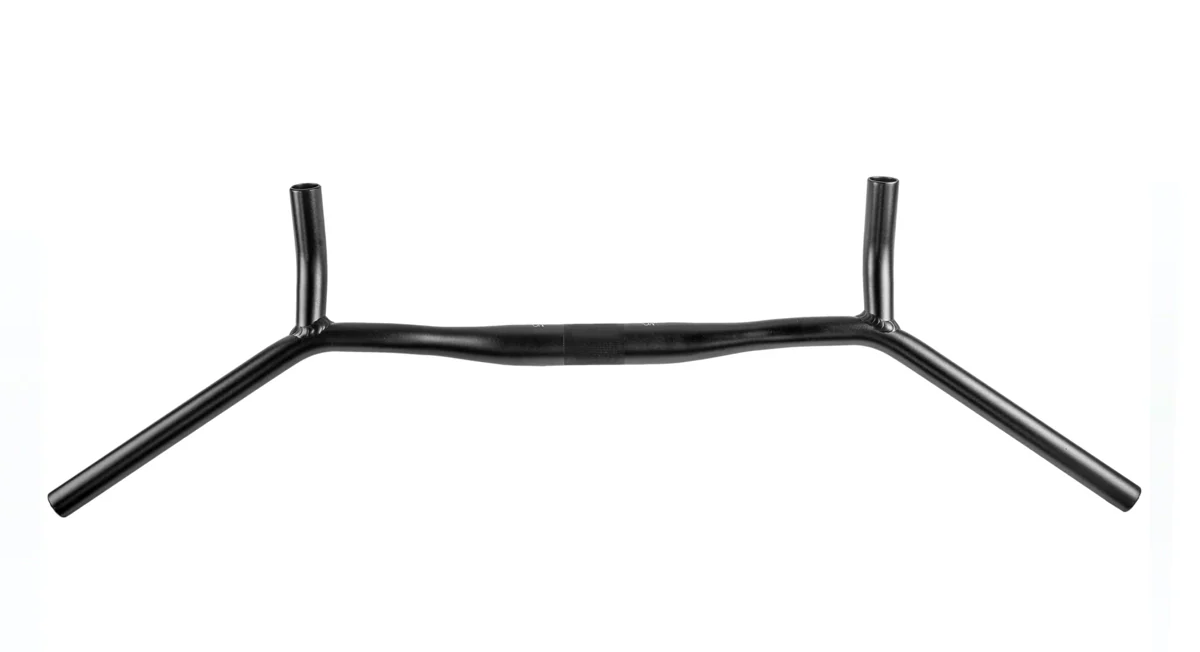
Backsweep: 45° in swept position
Width: 666mm
Rise: Minimal
Best for: Mixed-terrain touring requiring multiple riding positions
The Crazy Bar offers perhaps the most versatile design on our list, combining elements of drop bars, aero bars, and swept bars into one package. The bullhorns provide an aero position for headwinds and paved sections, while the swept-back grips offer control and comfort for technical terrain.
Why we love it: For tourers and bikepackers who face varied terrain, this bar is uniquely versatile – you essentially get three distinct riding positions in one. The ability to mount both MTB and road components adds significant flexibility for builds that blend components from different disciplines.
Considerations: The unusual shape has a learning curve and can make bag mounting more complex than with other options. At 470g, it’s reasonably lightweight for an aluminum bar with this much complexity.
4. SQ Labs 30X 16° — Best for Technical Trail Riding ($)
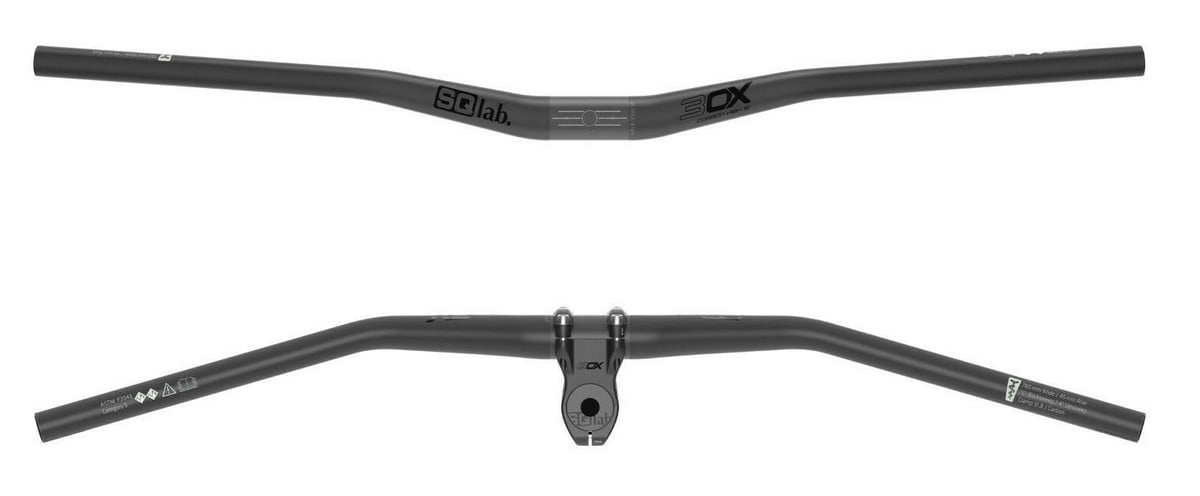
Backsweep: 16°
Width: 780mm
Rise: Available in 15mm, 30mm, or 45mm
Best for: Trail riders wanting comfort without dramatic position changes
For those who prioritize technical trail handling while still addressing wrist comfort, the SQ Labs 30X with 16° sweep hits the sweet spot. The moderate sweep improves ergonomics without dramatically changing your bike’s handling characteristics – making it perfect for riders who want comfort but still need aggressive control.
Why we love it: Available in three rise options and carbon or aluminum construction, these bars allow you to fine-tune your position. The moderate sweep works exceptionally well for technical riding while still providing significant ergonomic benefits compared to standard bars.
Considerations: Fewer hand positions compared to loop-style bars makes these less ideal for all-day touring. The carbon option commands a premium price but delivers excellent vibration damping.
5. Soma Clarence Bar — Best Budget-Friendly Alternative to Jones ($)
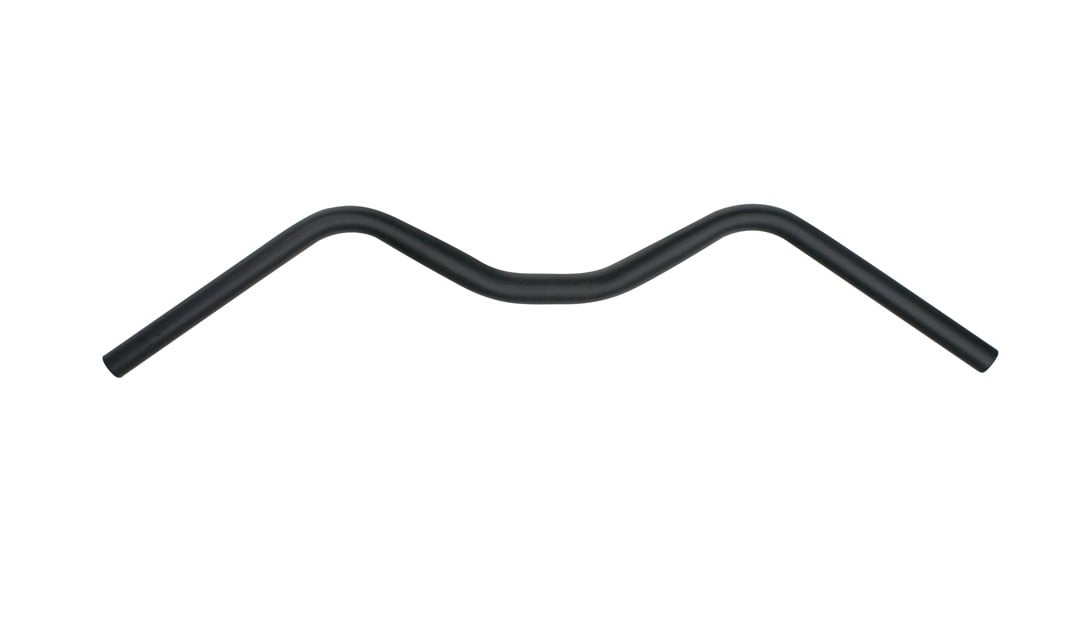
Backsweep: 34°
Width: 670mm
Rise: 37mm
Best for: Riders seeking Jones-like comfort at a more accessible price
The Soma Clarence delivers comfort-oriented geometry that approaches the Jones H-Bar experience at a significantly lower price point. With 34° of backsweep and 19° of upsweep, these bars place your hands in a natural position that relieves pressure on your wrists without breaking the bank.
Why we love it: Provides much of the comfort benefit of more expensive options at roughly half the price. The aluminum construction keeps weight reasonable at around 320g while maintaining durability for touring adventures.
Considerations: No forward extensions limit hand position options compared to the Jones or Moloko. The 670mm width may feel narrow for riders with broad shoulders or those used to modern trail bar widths.
6. Origin8 Space Off Road 2 — Best Budget Swept Bar ($)
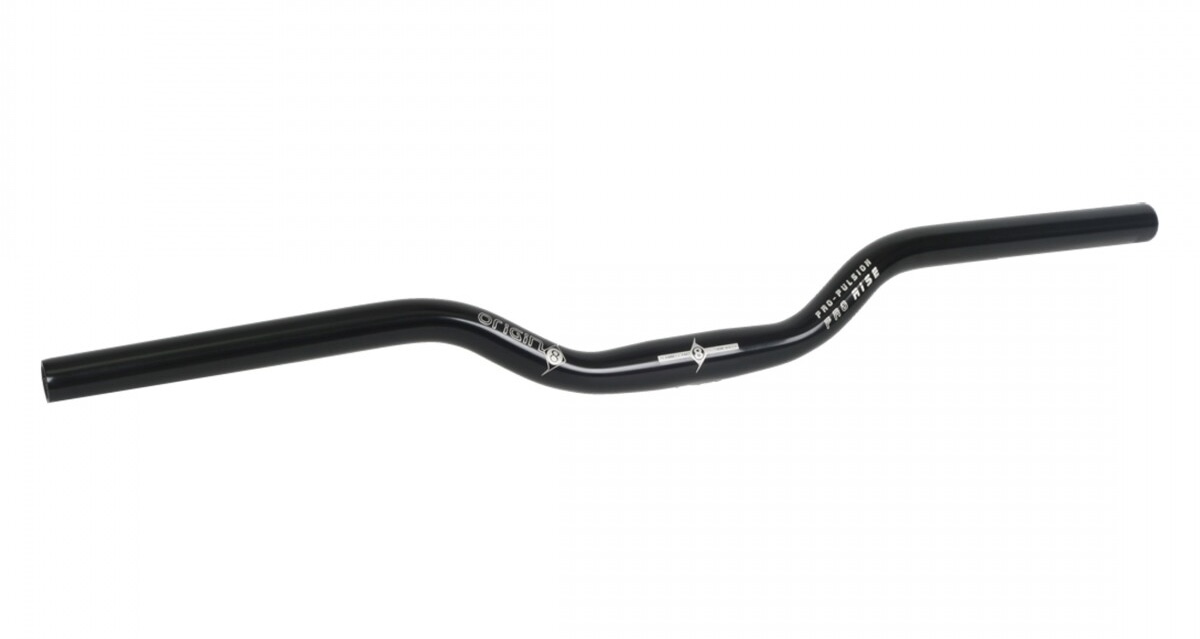
Backsweep: 30-40°
Width: 650mm
Rise: Minimal
Best for: Testing swept bars without significant investment
This affordable alt bar provides similar ergonomic benefits to premium options at a fraction of the cost. For riders curious about swept bars but hesitant to invest in premium options, the Origin8 Space offers an accessible entry point without sacrificing too much functionality.
Why we love it: The swept design with forward extensions provides multiple hand positions similar to bars costing three times as much. Available in both 25.4mm and 31.8mm clamp diameters, making it compatible with a wide range of stems.
Considerations: Build quality doesn’t match premium options, and there are inconsistent reports about the exact sweep angle (varying between 30-40°). Consider this an excellent “test” bar before investing in higher-end options.
7. Surly Open Bar — Most Extreme Sweep for Upright Riding ($)
Backsweep: 53°
Width: 666mm
Rise: 40mm or flat options
Best for: Riders with significant wrist pain requiring maximum relief
For riders with serious wrist issues or those wanting the most upright position possible, the Surly Open Bar delivers with its dramatic 53° sweep. Available in rise and flat options, these chromoly bars offer flex that dampens trail vibrations while placing your hands in an extremely natural position.
Why we love it: The extreme sweep angle is unmatched for relieving pressure on wrists and placing riders in a fully upright position. The steel construction provides “springy” flex that takes the edge off rough terrain – perfect for gravel and unimproved roads during touring adventures.
Considerations: The dramatic sweep significantly changes handling characteristics, requiring substantial adaptation time. The 25.4mm clamp diameter may require shims for modern stems with 31.8mm clamps.
Installation Considerations
Switching to swept-back handlebars isn’t as simple as swapping one component – it’s a system change that affects multiple aspects of your bike. Here’s what you need to consider:
1. Cable and Housing Length
When you install swept-back bars, your cables will need to travel a different path to reach your brake levers and shifters. In many cases, your existing cables and housing will be too short for the new setup.
What you’ll need: Prepare to replace brake and shifter cables and housing. Purchase extra length to accommodate any routing changes.
2. Brake Lever and Shifter Compatibility
Some swept-back bars have different diameters at the grip area, which can affect compatibility with your existing components.
What you’ll need: Verify that your brake levers and shifters will mount properly. Bars with 22.2mm grip areas will accept standard MTB components, while drop-bar components generally require 23.8mm areas.
3. Stem Length and Rise
Swept-back bars effectively shorten your bike’s reach. You may need to adjust your stem to maintain a comfortable position.
What you’ll need: Consider a longer stem if your bike feels too cramped after installation. Alternatively, a stem with more rise can help achieve a more upright position.
4. Grip Selection
The angle of swept-back bars changes how pressure is distributed on your palms. Your existing grips may not provide comfort in the new position.
What you’ll need: Ergonomic grips that complement the bar’s sweep. Lock-on grips make installation easier when transitioning between different bar styles.
Compatibility Check: What You’ll Need
Use this checklist to ensure a smooth transition to swept-back handlebars:
Required Items
- New cables and housing: Both brake and shifter cables typically need replacement
- Cable cutters: For precise cable and housing cuts
- Appropriate grips: Ergonomic grips complement swept bars
- Stem shims (if necessary): To adapt bars to your stem’s clamp diameter
- Torque wrench: To ensure proper tightening without damage
Optional Items
- New stem: May be needed to achieve proper reach
- Bar tape (for loop-style bars): Provides cushioning on forward sections
- Handlebar accessory mounts: For lights, computers, etc.
Adjusting Your Riding Position
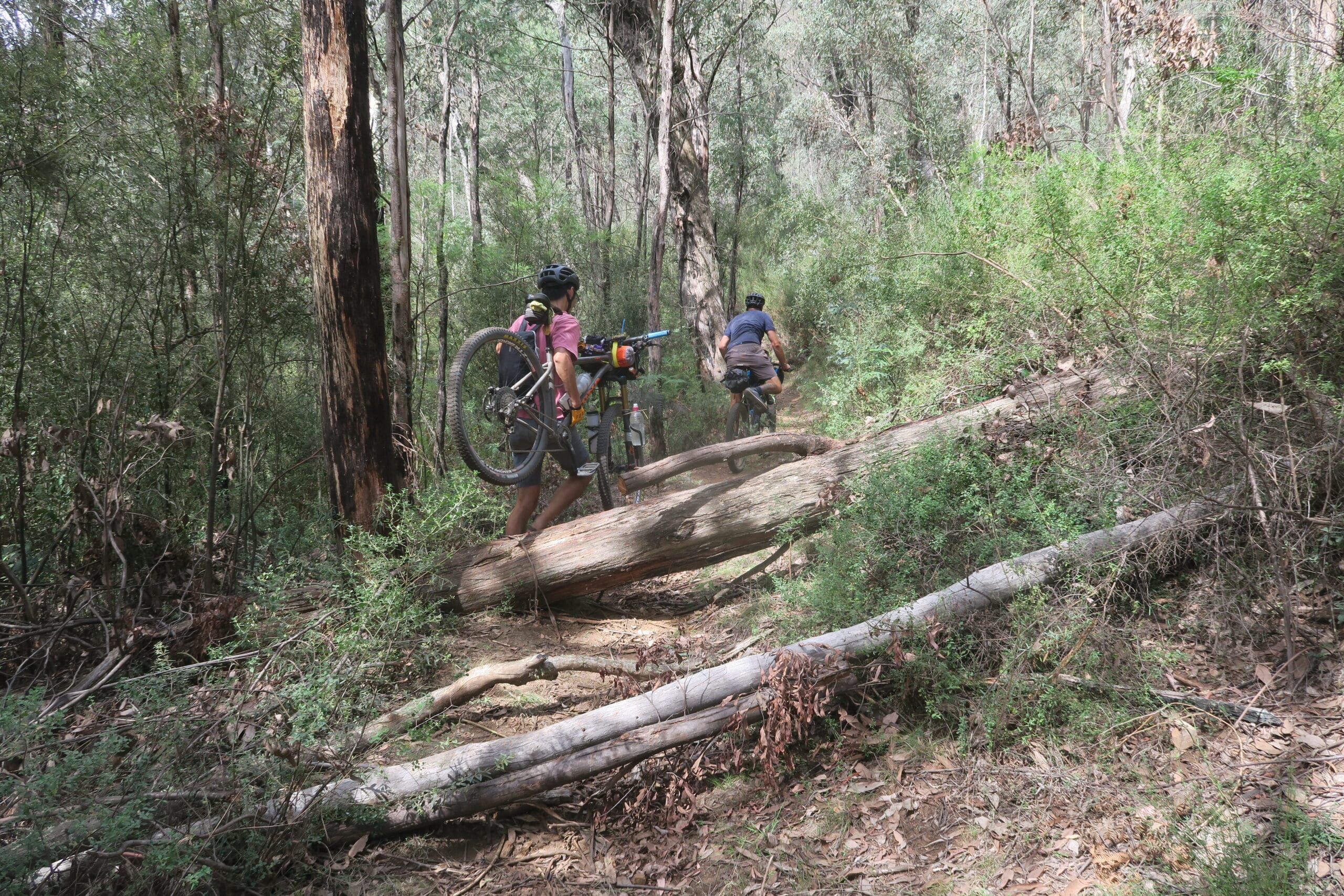
After installing swept-back handlebars, your body position will change. Here’s how to optimize your setup:
1. Saddle Position
With a more upright torso position, you may need to adjust your saddle. Try these steps:
- Start with your existing saddle position
- After installing new bars, evaluate comfort
- Consider moving the saddle forward slightly to compensate for the more upright position
- Adjust saddle height if necessary (upright positions sometimes benefit from slightly lower saddle height)
2. Stem Adjustments
Finding the right stem is crucial for optimizing your position:
- Too stretched? Try a shorter stem or one with more rise
- Too cramped? Consider a longer stem
- Handlebar too low? Look for stems with 17-35° rise
3. Adaptation Period
Give yourself time to adapt to the new position:
- Start with shorter rides to acclimate
- Expect different muscle engagement
- Be prepared for a 2-3 week adjustment period
- Pay attention to any new discomfort and make incremental adjustments
FAQs About Swept-Back Handlebars
How much backsweep do I need?
The ideal backsweep depends on your goals:
- 15-25°: Subtle improvement in ergonomics without dramatically changing position
- 25-35°: Significant comfort improvement with moderate position change
- 35-45°+: Maximum comfort with dramatic position change
For first-time alt bar users, starting in the 25-35° range provides noticeable benefits while maintaining familiar handling.
Will swept-back handlebars slow me down?
While swept-back bars create a less aerodynamic position, the comfort benefits often allow you to ride longer without fatigue. For bikepacking and touring, the trade-off usually favors comfort over speed. For racing applications, traditional bars remain more efficient.
Can I use swept-back handlebars for technical trail riding?
Absolutely! Many riders find that the natural wrist position improves control on technical terrain. Bars with moderate sweep (15-25°) typically maintain responsive handling while providing ergonomic benefits.
Do I need to change my stem when installing swept-back bars?
In many cases, yes. Swept-back bars effectively shorten your bike’s reach, which may require a longer stem to maintain proper position. Start with your existing stem, then adjust based on comfort.
How do I know if my controls will work with swept-back bars?
Most swept-back bars maintain the standard 22.2mm diameter grip area compatible with mountain bike controls. If your bar has a different diameter or you’re using drop bar components, you’ll need to verify compatibility or purchase adapters.
Will I need longer cables and housing?
Almost certainly. The changed bar position almost always requires longer cables and housing, especially for rear brakes and derailleurs. Purchase extra length to accommodate routing changes.
Can I convert my drop-bar bike to swept-back bars?
Yes, but with considerations:
- Drop bar shifters and brake levers typically won’t work with flat bars
- You’ll need MTB-compatible brake levers and shifters
- The frame geometry may require a shorter stem to achieve comfortable reach
How long will it take to adjust to swept-back handlebars?
Most riders require 2-3 weeks of regular riding to fully adapt. Initial rides may feel strange as your muscles and proprioception adjust to the new position. Give yourself time before making final judgments.
Conclusion
Swept-back handlebars represent one of the most significant comfort upgrades available for your bike. Whether you’re dealing with wrist pain, seeking a more upright position, or preparing for long-distance adventures, the right alt bars can transform your riding experience.
Remember that transitioning to swept-back bars is a system change – budget for new cables, possibly a new stem, and give yourself time to adapt to the new position. The ergonomic benefits typically outweigh the adjustment period and initial investment.
For riders dealing with persistent discomfort on long rides, swept-back handlebars aren’t just an option – they’re often the solution that keeps cycling enjoyable and sustainable for years to come.
Your Next Steps:
- Assess your current discomfort points and riding goals
- Choose bars with appropriate sweep for your needs
- Prepare for a complete system upgrade (cables, grips, etc.)
- Allow adaptation time before making final judgments
- Fine-tune your position with stem and saddle adjustments
What has your experience been with swept-back handlebars? Share in the comments below!
This article contains affiliate links. If you purchase through these links, we earn a small commission at no extra cost to you, which helps support our content. We only recommend products we genuinely believe in.
About The Author
Codey Orgill
Codey Orgill, a seasoned bicycle adventurer, has been exploring the world on two wheels for over 10 years. Since embarking on his initial cycling journey, Codey Orgill has traversed numerous countries, experiencing a series of epic adventures.

